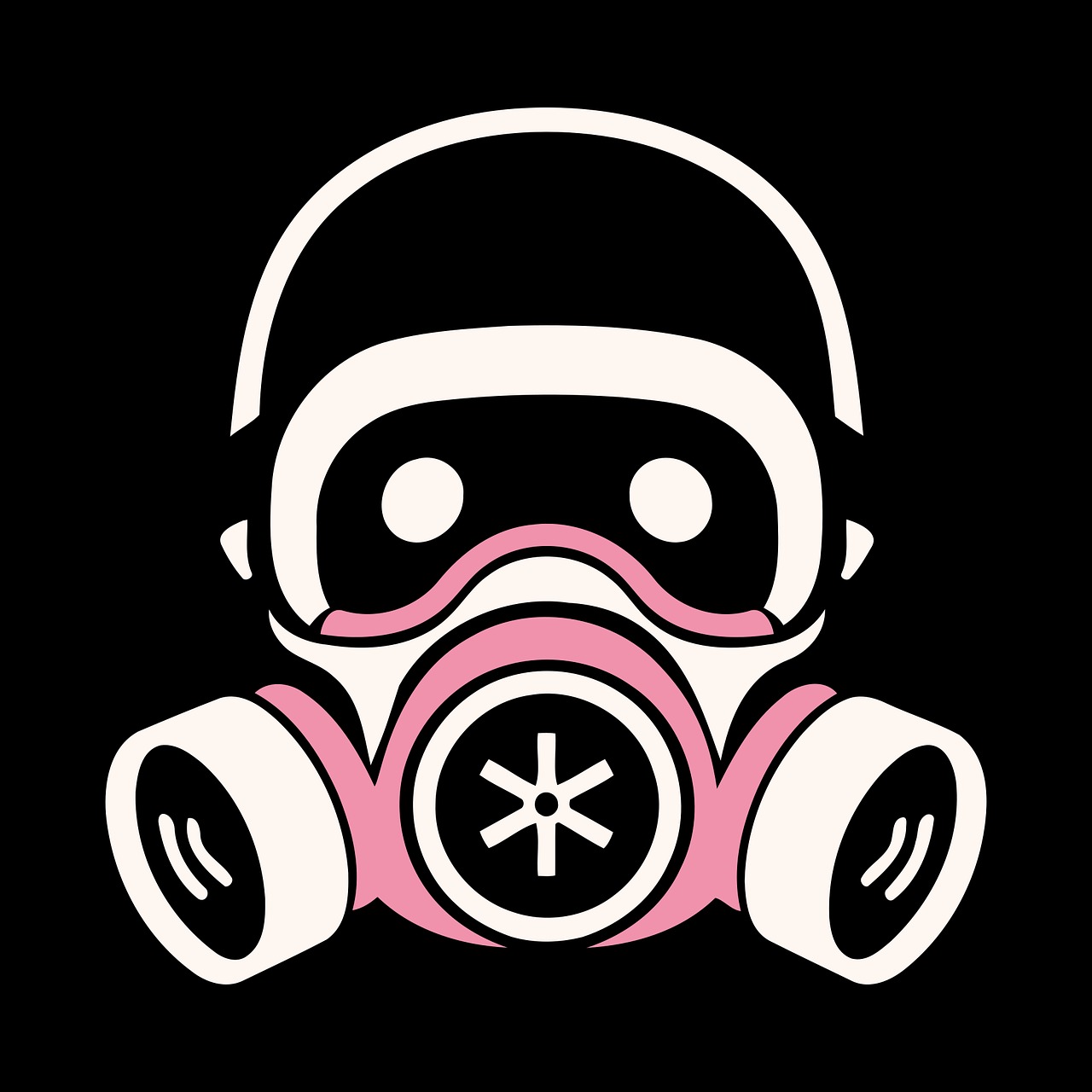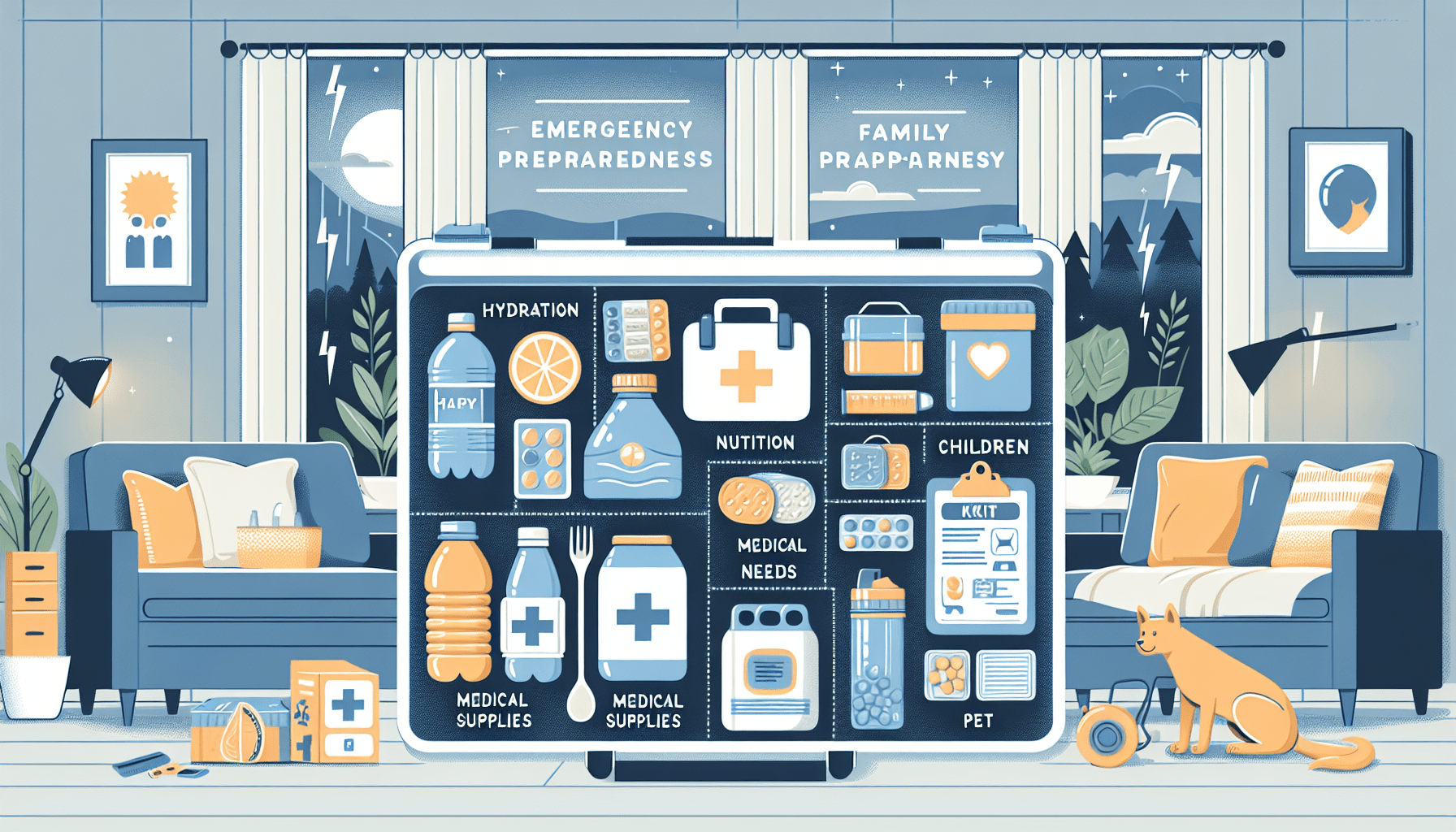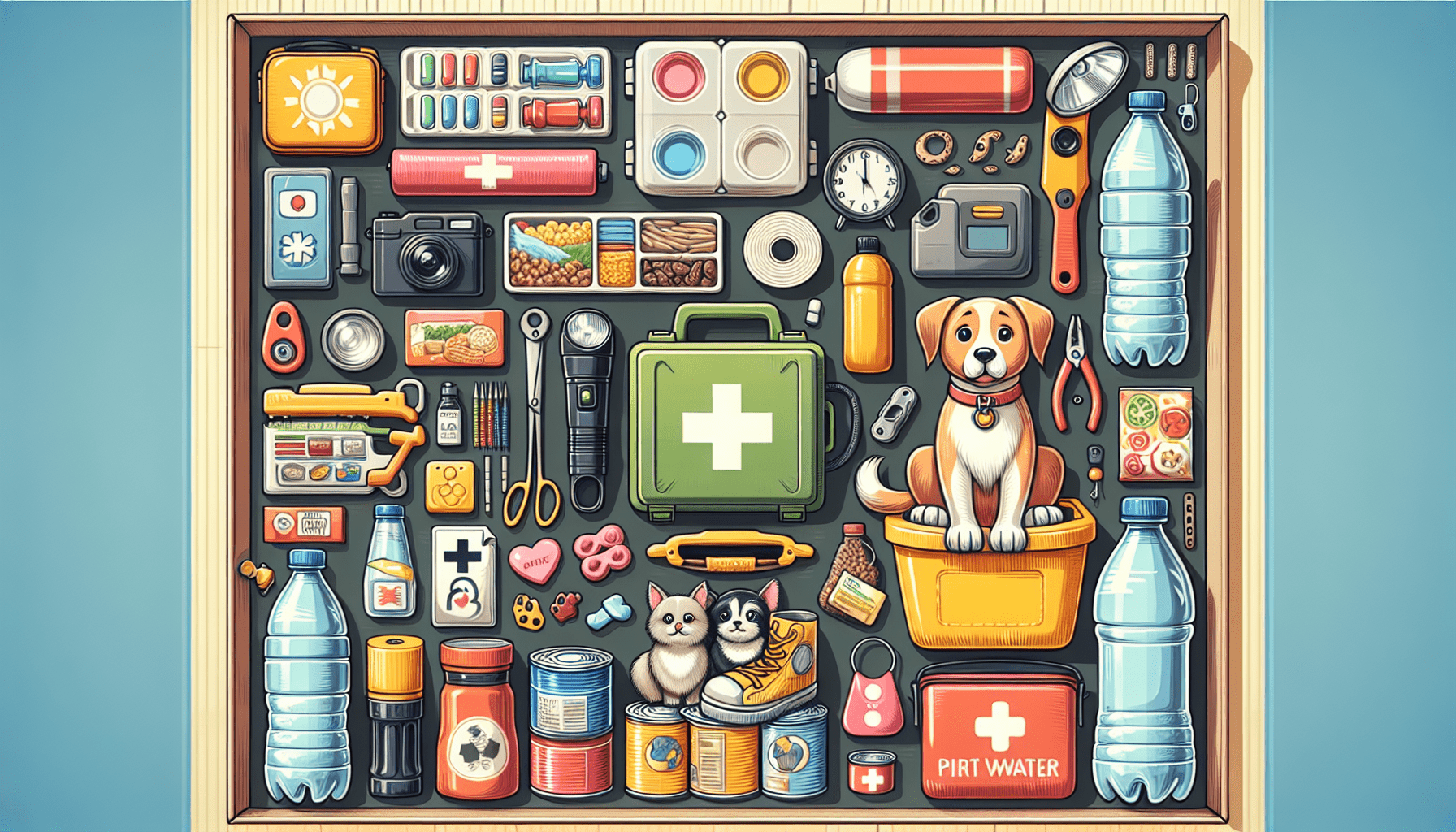Are you prepared for unexpected emergencies that might affect your family? In times of crisis, having a well-stocked emergency preparedness kit can make a significant difference. This article aims to guide you through the process of creating a family-friendly emergency kit, ensuring that you have everything you need to keep your loved ones safe and comfortable during any unforeseen events. From essential supplies to unique considerations for children and pets, we will cover it all, empowering you to face any emergency situation with confidence.

Water and Food Supplies
Bottled water
When preparing for an emergency, one of the most important items to have on hand is bottled water. Make sure you have enough water to sustain your family for at least three days. The general rule is to have one gallon of water per person per day. This will cover drinking, cooking, and sanitation needs. It’s preferable to use commercially bottled water with a shelf life of at least one year. Remember to check the expiration dates and rotate your water supply every six months to ensure freshness.
Canned food
Having a supply of non-perishable canned food is essential for any emergency preparedness kit. Canned foods are convenient, long-lasting, and provide essential nutrients. Aim for a variety of options, including fruits, vegetables, proteins, and grains. Look for foods with low sodium content and easy-open lids. Don’t forget to pack a manual can opener as well. Keeping a well-stocked pantry of canned goods will help ensure your family has nourishment during an emergency situation.
Granola bars
In addition to canned food, it’s a good idea to include some easy-to-consume snacks in your emergency kit. Granola bars are an excellent choice because they are compact, lightweight, and have a long shelf life. These tasty treats provide a quick burst of energy when you and your loved ones need it most. Look for granola bars that are high in fiber and contain a variety of nuts and dried fruits for added nutrition.
Dried fruit
Dried fruit is another great addition to your emergency food supply. Not only is it delicious, but it also provides essential vitamins, minerals, and fiber. Dried fruit is lightweight and has a long shelf life, making it an ideal option for your emergency kit. It can be eaten as is or used in cooking and baking if necessary. Consider packing a variety of dried fruits to provide a mix of flavors and nutrients for your family.
Peanut butter
Peanut butter is not only a delicious and versatile spread, but it also offers a good source of protein and healthy fats. It’s a fantastic addition to your emergency food supply as it can be easily stored and doesn’t require refrigeration. Peanut butter can be spread on crackers or bread, used as a dip, or even added to cooked meals for extra flavor and nutrition. Opt for natural peanut butter without added sugars or hydrogenated oils for a healthier option.
Crackers
Crackers are another must-have item for your emergency food supply. They are lightweight, non-perishable, and versatile. You can use them as a base for spreads like peanut butter or cheese, or enjoy them on their own as a quick snack. Look for crackers with whole grains for added nutritional value. Include a variety of flavors and types in your kit to accommodate different preferences within your family.
First Aid Kit
Band-aids
A well-stocked first aid kit is essential for any emergency preparedness plan. Start with a variety of band-aids in different sizes. These adhesive strips are useful for covering minor cuts, scrapes, and blisters. Make sure to pack waterproof band-aids to ensure they stay in place even in wet conditions. Consider including specialized band-aids like those designed for blisters or sensitive skin.
Antiseptic wipes
Antiseptic wipes are essential for cleaning wounds and preventing infection. They are individually packaged and pre-moistened, making them convenient to use in emergency situations. These wipes contain antiseptic agents that kill germs and bacteria on the skin. Remember to restock your supply regularly as these wipes may dry out over time.
Gauze pads
Gauze pads are a versatile addition to your first aid kit. They can be used to clean wounds, apply medication or ointment, and cover larger injuries. Look for sterile, individually wrapped gauze pads in various sizes to accommodate different needs. Non-stick pads are especially useful as they won’t stick to the wound, making dressing changes easier and less painful.
Adhesive tape
Adhesive tape is an essential item for securing dressings, splints, or any other items in your first aid kit. It is a versatile tool that can be used to hold bandages in place or provide support for injured joints and muscles. Choose a hypoallergenic tape that is gentle on the skin, especially if you or your family members have sensitive skin.
Pain relievers
Pain relievers can come in handy during emergencies when injuries or illness may occur. Pack a variety of over-the-counter pain relievers like acetaminophen or ibuprofen, taking into consideration any allergies or medical conditions within your family. It’s important to follow the recommended dosages, and consult a healthcare professional if you have any concerns.
Antibiotic ointment
Including antibiotic ointment in your first aid kit can help prevent infections in minor cuts, burns, and scrapes. These ointments contain ingredients that fight bacteria and promote healing. Choose a small tube or individual packets for easy storage and use. Remember to check the expiration dates regularly and replace any expired ointments.

Flashlights and Batteries
LED flashlights
When the power goes out during an emergency, having a reliable source of light is crucial. LED flashlights are an excellent choice due to their energy efficiency and long battery life. They produce bright, white light and are more durable than traditional incandescent flashlights. Look for flashlights with adjustable settings and a sturdy construction.
Extra batteries
To ensure your flashlights and other battery-powered devices remain functional, it’s important to have a stockpile of extra batteries. Choose batteries that are compatible with the devices in your emergency kit, such as AA or AAA batteries. It’s a good idea to store these batteries in a cool, dry place and check them periodically to ensure they are still in working condition.
Emergency Blankets
Space blankets
Emergency blankets, also known as space blankets or thermal blankets, are lightweight, compact, and designed to retain body heat. They are made from heat-reflective material and can help prevent hypothermia during emergencies. Space blankets are typically silver in color and fold up into a small package, making them easy to store in your emergency kit.
Fleece blankets
In addition to emergency blankets, including a few fleece blankets in your kit can provide extra warmth and comfort. Fleece blankets are soft, lightweight, and provide insulation even when wet. They are easy to clean and quick to dry, making them ideal for emergency situations. Pack enough blankets to ensure every family member has one, and consider including extras for additional comfort.

Communication Devices
Portable radio
During an emergency, staying informed about the situation is crucial. Portable radios can provide you with vital information from emergency broadcasts and weather updates. Look for radios that are battery-powered and have both AM and FM frequencies. Some radios even come with built-in flashlights and cellphone charging capabilities.
Battery-powered phone charger
In today’s digital age, having a way to charge your cellphone can be essential during an emergency. Battery-powered phone chargers can keep your device up and running even when there is no access to electricity. Look for chargers that are compact, lightweight, and compatible with your specific cellphone model. Ensure you have enough batteries to power the charger for an extended period if needed.
Personal Hygiene Items
Toothbrushes
Maintaining personal hygiene is essential, even during emergencies. Pack a toothbrush for each family member to ensure everyone can keep their teeth and gums clean. Consider using travel-size toothbrushes to save space in your emergency kit.
Toothpaste
Accompanying the toothbrushes, include travel-size toothpaste tubes. Look for fluoride toothpaste to help prevent tooth decay and maintain oral health. Don’t forget to replace toothpaste tubes as they reach their expiration dates.
Soap
Proper hand hygiene is crucial for preventing the spread of germs and bacteria. Include small bars of soap in your emergency kit to ensure your family can wash their hands when necessary. Look for antibacterial or gentle moisturizing soaps that won’t dry out the skin. Remember to store the soap in a waterproof container to avoid any mess or water damage.
Hand sanitizer
In situations where water and soap are not readily available, hand sanitizer can be a useful alternative. Include travel-size bottles of hand sanitizer with a minimum alcohol content of 60%. These handy sanitizers can kill many types of germs and bacteria, providing a quick and convenient hygiene solution.
Feminine hygiene products
For female family members, it’s important to include an adequate supply of feminine hygiene products in your emergency kit. Choose products that suit individual preferences, such as pads, tampons, or menstrual cups. These items are essential for maintaining comfort and cleanliness during challenging times.

Extra Clothing and Blankets
Warm clothing
Emergency situations often involve exposure to harsh weather conditions. It’s crucial to have warm clothing available for every family member to stay comfortable and protected. Pack extra layers such as jackets, sweaters, and thermal underwear. Choose clothing made from insulating materials like wool or fleece for optimal warmth. Additionally, include waterproof clothing, such as raincoats or ponchos, to protect against rain and dampness.
Extra socks
Having dry and warm feet is essential to prevent discomfort and potential health issues during emergencies. Pack several pairs of extra socks for each family member. Look for moisture-wicking socks made of wool or synthetic materials that will keep feet dry and help regulate temperature. Include both regular socks and thermal socks for added warmth.
Hats
Hats are crucial for protecting the head and ears from cold weather. Include warm hats in your emergency kit to help retain body heat and prevent heat loss through the head. Look for hats that cover the ears and provide insulation. It’s also a good idea to pack hats with brims to protect against sun exposure if needed.
Gloves
Gloves are essential for keeping hands warm and protected during emergency situations. Pack a variety of gloves, including insulated gloves and waterproof gloves, to suit different weather conditions. Consider including glove liners made of thin, moisture-wicking material to provide extra warmth when necessary.
Entertainment Items
Playing cards
During an emergency situation, keeping spirits high and boredom at bay is crucial. Playing cards are a classic and versatile source of entertainment for the whole family. They are compact, lightweight, and offer a wide variety of games to keep everyone engaged and occupied.
Board games
Including a few board games in your emergency kit can be a wonderful way to pass the time and bring the family together. Choose games that are compact and easy to transport, such as travel-sized versions of popular board games. Look for games that require minimal setup and components to ensure they are suitable for emergency situations.
Coloring books
For families with younger children, coloring books can be a great way to provide entertainment and creative expression during emergencies. Pack a few coloring books with a variety of themes and include a set of crayons or colored pencils. Coloring can be a calming and enjoyable activity for both children and adults.
Crayons
Accompanying the coloring books, pack a set of crayons to complete the artistic experience. Look for non-toxic crayons that are suitable for all ages. Including different colors and varieties will allow for greater creativity and imagination.
Books
Having a collection of books can provide a much-needed escape and relaxation during stressful times. Choose a variety of genres and include books suitable for all family members. Consider packing both physical books and electronic readers loaded with e-books to accommodate different preferences.

Emergency Contact List
Important phone numbers
Having a list of important phone numbers readily available is crucial during emergencies. Include contact information for family members, neighbors, friends, and emergency services. It’s advisable to have both local and out-of-state emergency contact numbers in case local communication networks are affected.
Addresses
In addition to phone numbers, include a list of important addresses in your emergency contact list. This may include the addresses of nearby shelters, hospitals, or designated meeting places. Having this information readily available can help facilitate communication and coordination during emergencies.
Medical information
Include any relevant medical information for each family member in your emergency contact list. This may include allergies, chronic conditions, medications, or any other pertinent health details. In the event of an emergency, having this information easily accessible can help emergency responders provide appropriate care.
Cash and Important Documents
Small bills
In emergency situations, access to banks or ATMs may be limited. It’s important to have a supply of small bills on hand for purchasing essential items or services if needed. Aim for a mix of denominations to accommodate various expenses.
Identification documents
Having copies of important identification documents is crucial during emergencies. Include copies of birth certificates, passports, driver’s licenses, and any other relevant identification papers for each family member. Place these copies in a waterproof envelope or a sealed plastic bag for protection.
Insurance papers
Copy and include important insurance papers, such as health insurance, home insurance, and car insurance policies. These documents are essential for filing claims and accessing necessary assistance in case of emergencies. Store the copies in a secure and easily accessible location within your emergency kit.
By preparing a comprehensive emergency preparedness kit, you are taking a proactive step towards ensuring the safety and well-being of your family during unexpected situations. This family-friendly kit provides the essentials for sustenance, first aid, communication, personal hygiene, clothing, entertainment, and important documentation. Remember to periodically review and update your emergency kit to ensure the contents remain fresh, functional, and relevant to your family’s needs. Taking the time to create this kit will provide peace of mind and readiness in the face of emergencies. Stay safe, stay prepared, and be there for one another.
